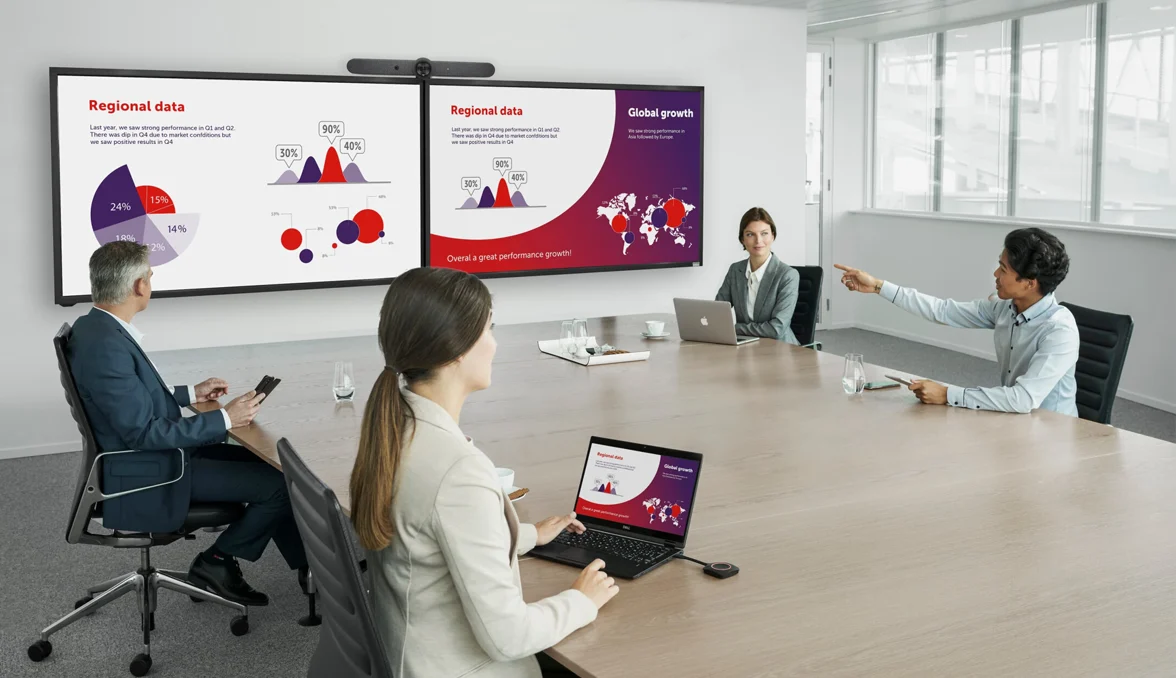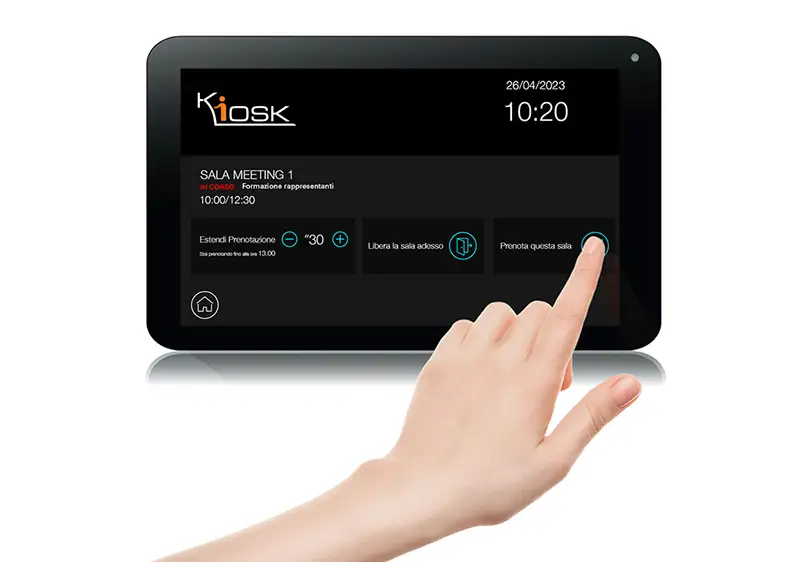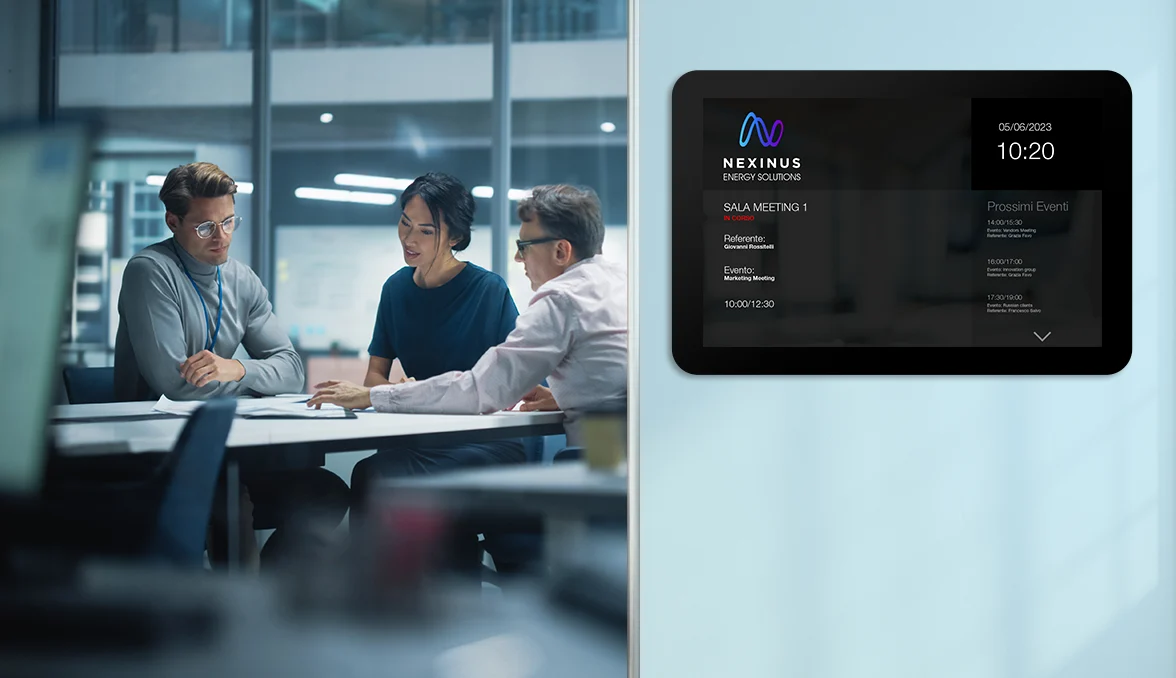In recent years, the concept of “workplace” has evolved significantly, adapting to the changing needs of employees and organizations. Different forces, including the advent of digital technologies, the growing demand for flexibility and the search for greater efficiency, have led to the emergence of different types of workplaces.
In this article, we’ll explore some of the most common types of workplaces, from traditional offices to innovative coworking spaces and beyond.
- Traditional Workplace
The traditional workplace is the classic model of work environment that has characterized companies for many decades. In this configuration, employees work in an office or dedicated corporate space, following standard business hours. The interaction between team members takes place mainly in person, favored by the physical proximity of colleagues. - Remote Workplace
The remote workplace has become increasingly popular in recent years thanks to the evolution of digital technologies and the greater flexibility of organizations. In this type of workplace, employees work from different locations, such as their homes, coworking spaces or public places, using mobile devices and remote communication tools to collaborate with colleagues. - Hybrid Workplace
The hybrid working model combines elements of the traditional workplace and the remote workplace. In a hybrid work environment, employees can alternate between working in the office and working remotely, depending on personal needs or company policies. This approach offers greater flexibility and can improve work-life balance. - Digital Workplace
The digital workplace is a revolution in the workplace, relying on the integration of digital technologies to improve productivity and collaboration between employees. Tools such as company chats, file sharing platforms, video conferencing and project management platforms are just some of the technologies that make up a digital workplace. - Coworking Space
Coworking spaces are shared workspaces that house independent professionals and different companies. These spaces offer shared services and infrastructure, promoting interaction and collaboration among community members. Coworking spaces are particularly suitable for freelancers, startups and professionals looking for a flexible and stimulating work solution. - Virtual Workplace
The virtual workplace is an emerging type of work environment that takes advantage of virtual or augmented reality technologies. In a virtual workplace, employees can interact and collaborate in simulated environments in an immersive way, even when physically distant. - Mobile Workplace
A mobile workplace is characterized by the predominant use of mobile devices, such as smartphones or tablets, to carry out work activities. This type of work environment is especially suited for roles that require a lot of mobility, such as salespeople or field technicians. - Distributed Workplace
A distributed workplace refers to organizations with headquarters or branch offices in different geographic locations. In this context, employees collaborate and communicate through digital tools, overcoming the physical barriers of corporate offices. - Agile Workplace
The agile workplace focuses on flexibility and the ability to quickly adapt to change. Typically, workspaces can be configured to meet the needs of the moment and promote creativity and collaboration among employees.
It is quite clear that the workplace concept has evolved significantly, offering different options for organizations and workers.
Each type of work environment has unique advantages and disadvantages, and the choice depends on the specific needs of the company, employee preferences, and the goal of creating a work environment that fosters worker productivity, collaboration, and well-being.

Digital Workplace: the revolution of modern work
In recent years, the world of work has undergone a radical transformation thanks to the advent of the digital workplace. This innovative technological solution has revolutionized the management of business activities, enabling a more flexible, collaborative and efficient work environment.
Let us now explore what a digital workplace is, why it is so important and what technological tools are needed to support today’s work needs.
But a doubt inevitably arises: digital workplace or digital workspace?
Both terms, “digital workplace” and “digital workspace”, can be used to refer to a work environment based on digital technologies.
However, there are subtle differences between the two, and the choice of term may come down to specific scope or personal preference.
Let us see a brief distinction between the two:
Digital Workplace: This term places emphasis on the entire workplace that has been transformed and improved through the use of digital technologies. It would include aspects such as the digitization of business processes, the adoption of digital tools for communication and collaboration, and the integration of advanced technologies to improve the efficiency and overall productivity of employees.
Digital Workspace: The term “digital workspace” refers more specifically to the space in which employees perform their work activities and which has been optimized through digital technologies. This may include using digital tools to organize and manage tasks, adopting coworking spaces or offices with advanced technologies, and accessing digital resources and information quickly and intuitively.
What is a Digital Workplace?
The digital workplace is a concept that indicates the integration of digital technologies and collaborative tools in the working environment. In other words, it is a virtual environment where employees can carry out their work activities efficiently, regardless of their physical location.
This digital transformation makes remote working possible, facilitates communication between team members, and fosters a more inclusive and open corporate culture.
The importance of the Digital Workplace
- Flexibility and mobility: The digital workplace allows employees to work wherever there is an internet connection. This flexibility allows for a better work-life balance, improving worker satisfaction and productivity.
- Collaboration without borders: Thanks to collaboration tools such as company chats, file sharing platforms and video conferencing, teams can work together even remotely. This facilitated communication promotes creativity and group efficiency.
- Attracting and retaining talent: New generations of workers are looking for modern and innovative companies. A well-structured digital workplace is an attractive element for attracting and retaining talent.
- Increased productivity: By reducing downtime and streamlining processes, the digital workplace allows employees to focus more on critical tasks, improving the overall efficiency of the company.
- Cost reduction: Companies can reduce operating costs by implementing remote working, such as office rentals and employee travel expenses.
Technological Equipment for an Efficient Digital Workplace
To implement an effective digital workplace, a company needs to invest in different technologies and tools. Some of the key elements include:
- Communication and collaboration platform: An enterprise messaging software, such as Slack or Microsoft Teams, allows employees to communicate in real time, share files and coordinate in projects with ease. Systems like Barco ClickShare make collaborating and sharing presentation documents really quick and easy.
- File sharing platform: Tools such as Google Drive, Dropbox or SharePoint allow you to store and share documents securely, ensuring quick and easy access to shared resources.
- Video conferencing tools: Applications such as Zoom, Microsoft Teams or Skype for Business on Poly systems make it possible to conduct virtual meetings with high-quality video and audio, facilitating communication and collaboration between team members spread across different locations.
- Cybersecurity: With remote working, it is essential to invest in cybersecurity solutions to protect corporate data and prevent external threats.
- Project management platforms: Tools like Trello, Asana or Jira help manage projects and tasks, keeping track of time and deadlines.
- Platforms for training and development: Investing in tools for online training and skills management allows you to develop the skills of your employees and keep their level of competence always up to date.
The digital workplace is a revolution in the world of work, offering a more flexible, collaborative and efficient work environment.
Thanks to a wide range of technological tools, companies can equip employees to work optimally, regardless of their physical location. Investing in a well-structured digital workplace is a crucial step in remaining competitive, attracting talent and adapting to today’s and tomorrow’s work challenges.

Agile Workplace: the revolution of efficiency and collaboration
In recent years, the Agile Workplace has emerged as an innovative and dynamic response to the changing needs of the world of work. This approach to the work environment is based on flexibility, the ability to adapt quickly to changes and the promotion of a corporate culture open to collaboration.
In this article, we’ll explore how the Agile Workplace works, its benefits, and what technology is needed to implement it successfully.
What is the Agile Workplace?
The Agile Workplace is an approach to work organization that aims to create a flexible, collaborative and efficient environment. The principles of agility, originally developed for project management and software development, have also been successfully applied to the wider workplace. The main objective is to break down traditional barriers, promoting open communication, sharing ideas and adopting new solutions quickly.
How Does the Agile Workplace Work?
- Configurable Spaces: Agile workspaces are configurable and adaptable to different needs. Employees can rearrange their work environment based on ongoing activities, encouraging collaboration between teams and the free exchange of ideas.
- Agile working methods: The Agile Workplace encourages the adoption of agile working methods, such as the Scrum or Kanban method, to manage projects and tasks. These methods promote flexibility, transparency and active participation of all team members.
- Collaboration and Open Communication: Open and transparent communication is key in the Agile Workplace. Tools like company chats, file sharing platforms and bulletin boards help keep all team members informed and engaged in ongoing projects.
- Sprints and Iterations: The Agile Workplace promotes the approach of “sprints” or iterations, where activities are divided into shorter, well-defined work cycles. This allows you to achieve tangible results and quickly adapt to changes.
- Culture of continuous learning: In an Agile Workplace, a culture of continuous learning is encouraged, where employees are encouraged to constantly improve and explore new ideas and innovative solutions.
Technologies needed for the Agile Workplace
To successfully implement an Agile Workplace, a few key technologies are required:
- Online Collaboration Platforms: Tools such as Slack, Microsoft Teams or Google Workspace (formerly G Suite) allow real-time communication, file sharing and the creation of thematic channels for collaboration between team members.
- Project management tools: Platforms like Trello, Asana or Jira help plan, manage and track tasks, making work more organized and efficient.
- Videoconferencing and Webinars: Tools such as Zoom or Microsoft Teams allow for virtual meetings and webinars, allowing the participation of team members or stakeholders from different geographical locations.
- Knowledge Management Platforms: Systems such as Confluence or SharePoint enable information to be documented and shared, allowing all team members to access corporate resources quickly and easily.
- Presentation sharing tools: BYOD systems like Barco ClickShare allow meeting participants to quickly share presentations, videos in a secure way. Any type of content from your devices can be shared via an app or hardware button.
- Roombooking system: systems that facilitate the booking of meeting rooms, offering an immediate when on availability, times and location.
- Cloud Solutions: Cloud technology is essential for providing remote access to corporate resources, allowing employees to work flexibly from anywhere connected to the Internet.
The Agile Workplace is a dynamic and efficient approach to the workplace, based on flexibility, collaboration and the adoption of agile working methods. This model has become particularly relevant in an increasingly fast and changing world.
Thanks to digital technologies, organizations can successfully implement the Agile Workplace, improving productivity, creativity and employee satisfaction, and at the same time, remain competitive and ready to face the challenges of the future.
Roombooking systems in modern workplaces
Room booking systems represent a significant innovation in the modern working environment and offer numerous advantages for optimizing the use of shared spaces. These systems are based on digital technologies that simplify the booking and management of meeting rooms, common spaces and other shared workspaces.
Let’s see how they work and what benefits they bring in modern workspaces.
Innovations and advantages in the modern workplace
- Booking automation: Room booking systems automate the process of booking rooms and spaces. Employees can easily check room availability, book them in real time and receive confirmation notifications. This reduces the time and effort required to organize meetings and other activities.
- Maximize the use of spaces: Thanks to centralized and organized booking, room booking systems allow you to maximize the use of shared spaces. Meeting rooms and common spaces are used efficiently, avoiding overlapping bookings or underutilization of resources.
- Simplified planning: Modern room booking systems allow for long-term planning, facilitating the planning of activities, periodic meetings and events. Users can easily view the booking calendar and plan accordingly.
- Promote collaboration: Room booking systems facilitate collaboration between employees. With the ability to book workspaces quickly and intuitively, teams can organize meetings, brainstorming and work sessions in a timely manner, improving team communication and productivity.
Data access and traceability: Room booking systems keep track of reservations and allow centralized management of information. This makes it easier for managers to monitor space usage, analyze data, and make informed decisions about room capacity and efficiency. - Integration with other tools: Many room booking systems integrate with other technologies, such as corporate calendars, messaging apps and video conferencing solutions. This integration further simplifies space reservations and employee communication.
 How roombooking systems work
How roombooking systems work
Advanced roombooking systems like Kiosk Targa usually have the following characteristics.
- Intuitive User Interface: Room booking systems usually offer a simple and intuitive user interface. Users can access the platform through a web or mobile application.
- Availability view: Users can view room and space availability in real time via a visual calendar. You can filter the options by size, equipment and other specifications.
- Reservation and confirmation: Once the desired room or space has been chosen, users can select the date and time for the reservation. After confirming the booking, they will receive a confirmation notification. The booking can be made both from your own PC and from digital touchpoint located near the meeting room.
- Notifications and Reminders: Room booking systems send notifications and reminders to users to remind them of upcoming bookings and meetings.
- Management and analysis of reservations: Managers can manage reservations, accept or reject them, and access reports and analysis on the use of spaces.
- Integrated wayfinding: each meeting room booking update is automatically activated on the digital totem or summary display responsible for digital signage or general directory functionality for employees or visitors.
Conclusion
Room booking systems are a valuable innovation in modern workspaces. They simplify the booking of shared spaces, maximize the use of resources, promote collaboration and allow efficient management of business activities.
Thanks to their flexibility and practicality, they help create more agile and productive work environments.
Kiosk consultancy will guide you in every step of the transformation, providing a strategic and personalized vision to adapt new technologies to the specific needs of your company. Leverage our experience and expertise to create a hybrid, agile and future-proof workplace.
Our offer includes:
- Advice
- Design of the installation with site inspection
- Supply of audio video hardware equipment for video conferencing, collaboration and room booking
- Installation
- Maintenance
 |
Do you want to make your company more efficient, collaborative and cutting edge?Discover the potential of the digital workplace with cutting-edge solutions that optimize your team’s communication, collaboration and productivity. With the implementation of room booking systems, file sharing platforms and remote communication tools, you will be able to maximize the use of shared spaces and improve the management of corporate resources. |
 |
Do you want to make your company more efficient, collaborative and cutting edge?Discover the potential of the digital workplace with cutting-edge solutions that optimize your team’s communication, collaboration and productivity. With the implementation of room booking systems, file sharing platforms and remote communication tools, you will be able to maximize the use of shared spaces and improve the management of corporate resources.
|

